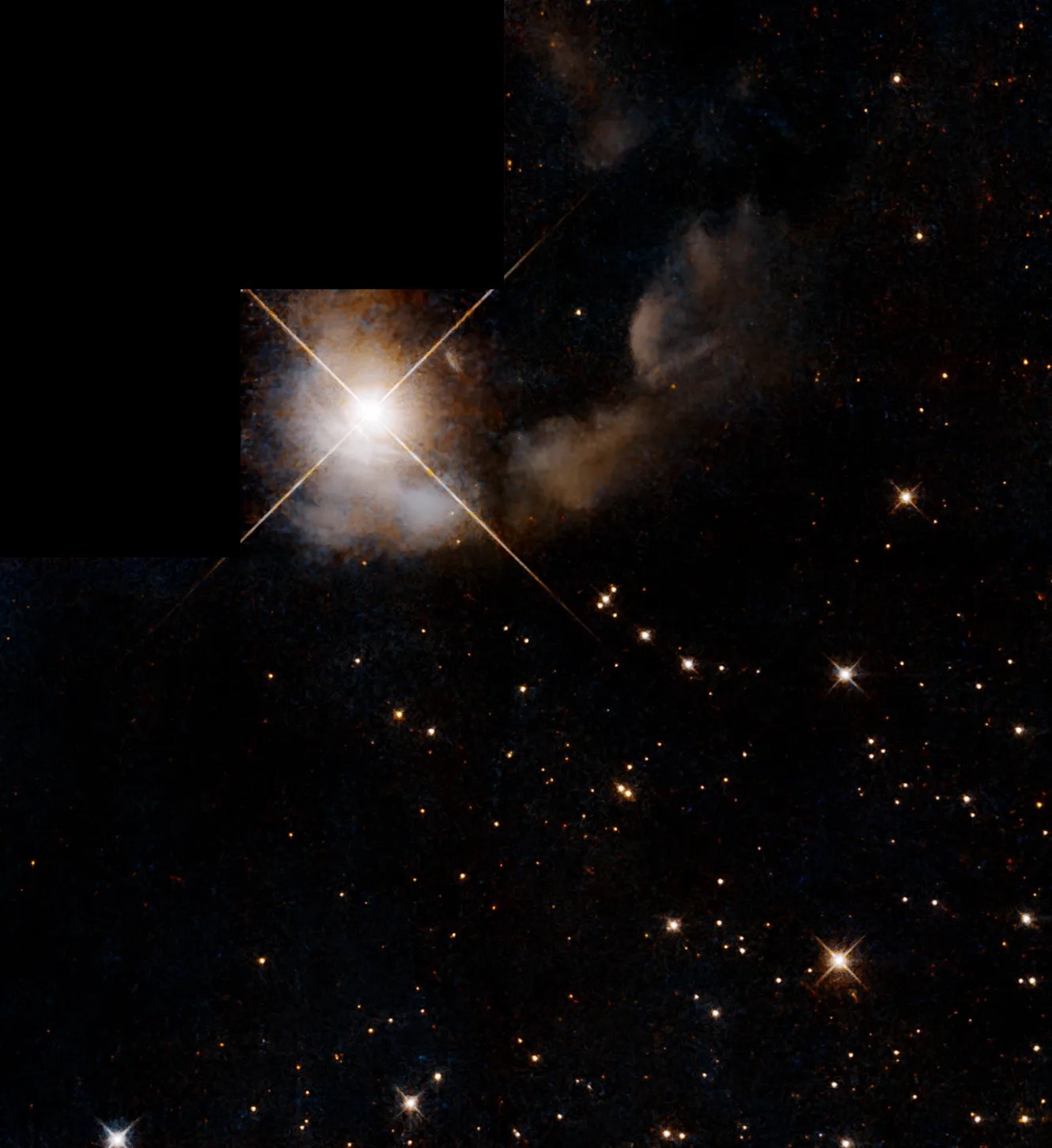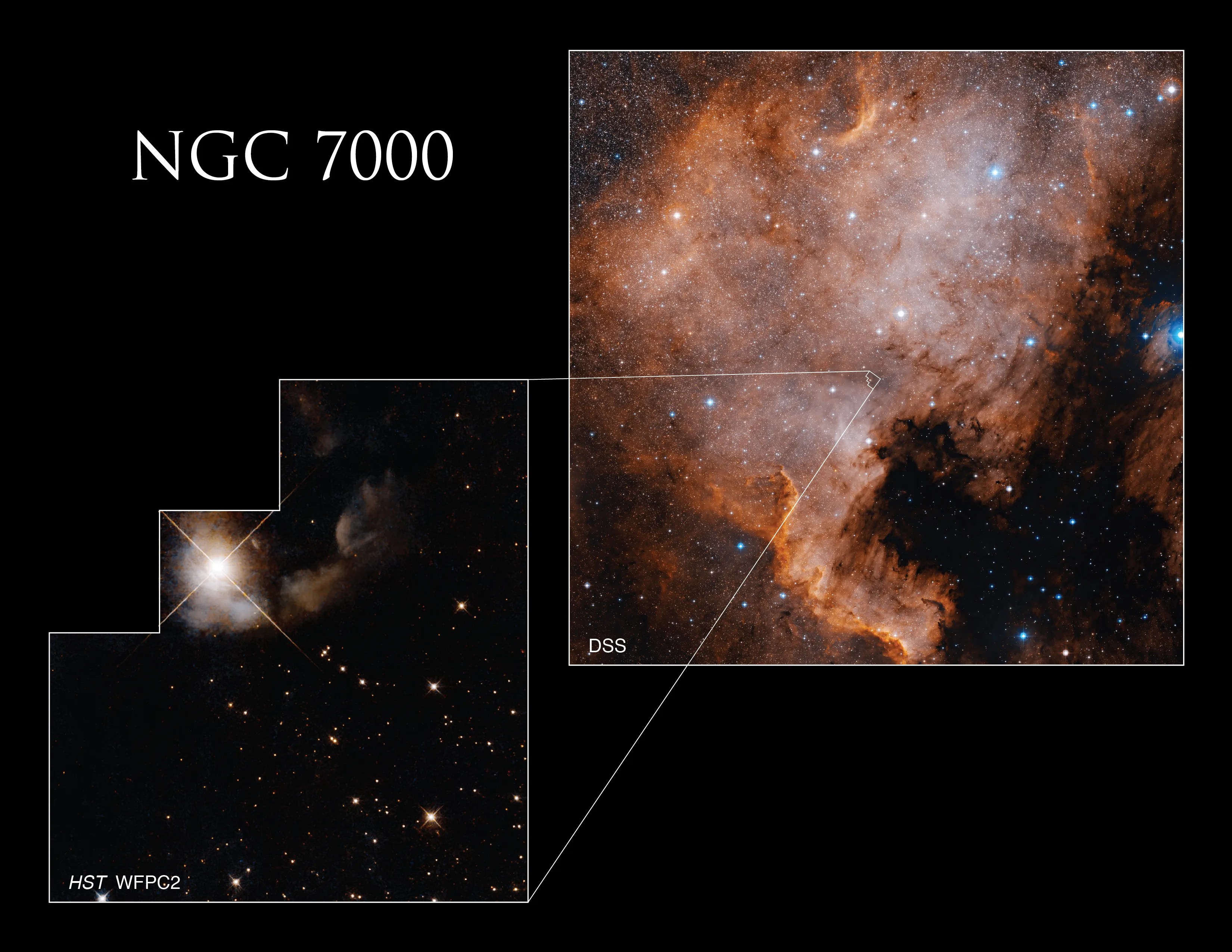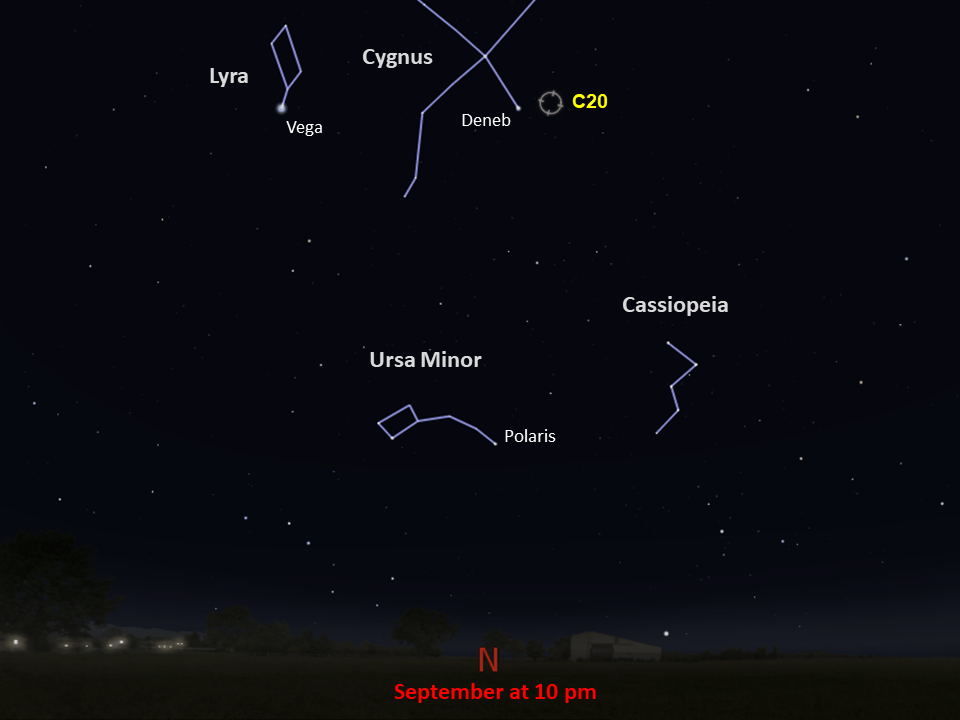Caldwell 20
C20's shape resembles the North American continent, giving it the nickname of the North America Nebula.
Distance
1,800 light-years
Apparent Magnitude
5.0
constellation
Cygnus
object type
Emission Nebula

Discovered by William Herschel in 1786 and nicknamed the North America Nebula because its shape resembles the continent, C20 is located roughly 1,800 light-years from Earth and occupies a space in the constellation Cygnus that appears more than three times larger than the full moon. However, despite an apparent magnitude of 5, the nebula does not appear very bright against the starry Milky Way. Binoculars or a small telescope will reveal it as a subtle brightening against its galactic backdrop. Observers can best view C20 in September.

Caldwell 20 is a stunning example of an emission nebula. The clouds of gas that make up the nebula are being ionized by a nearby star, causing the gas to glow as it emits energy. Colors emitted by emission nebulae depend on the chemical composition of the region. The reddish color that is characteristic of hydrogen and dominates C20 can be picked up by sensitive cameras.
This image of Caldwell 20, taken with Hubble’s Wide Field and Planetary Camera 2, is a part of a survey of T Tauri stars in nearby star-forming regions. T Tauri stars are young stars that vary in brightness over time. One reason this kind of star is important to astronomers is because a large portion of T Tauri stars have been found to host circumstellar disks. These disks of gas and dust may one day become fully fledged solar systems.


Glossary
Apparent Magnitude - The brightness of an astronomical object as seen from Earth, influenced by the object's distance from Earth, its absolute magnitude, and even gas and dust that lie between the object and Earth.
Emission Nebula - A cloud of ionized gas that emits energy at wavelengths across the electromagnetic spectrum, causing it to glow with vibrant colors.
Nebula - An interstellar cloud of dust and gas; either a location where new stars are being forged or a cloud of material ejected into space by a dying star.
T Tauri Star - A young star that has not yet reached temperatures high enough to ignite nuclear fusion, and exhibits variations in its brightness.
Explore Hubble's Caldwell Catalog
The following pages contain some of Hubble’s best images of Caldwell objects.

Caldwell 1
Also known as NGC 188, this group of stars formed from a large cloud of gas making the stars roughly…

Caldwell 2
This shell of gas is expanding outward, away from the dying star within.

Caldwell 3
This barred spiral galaxy was first spotted by British astronomer William Herschel in April 1793 in the constellation Draco.




